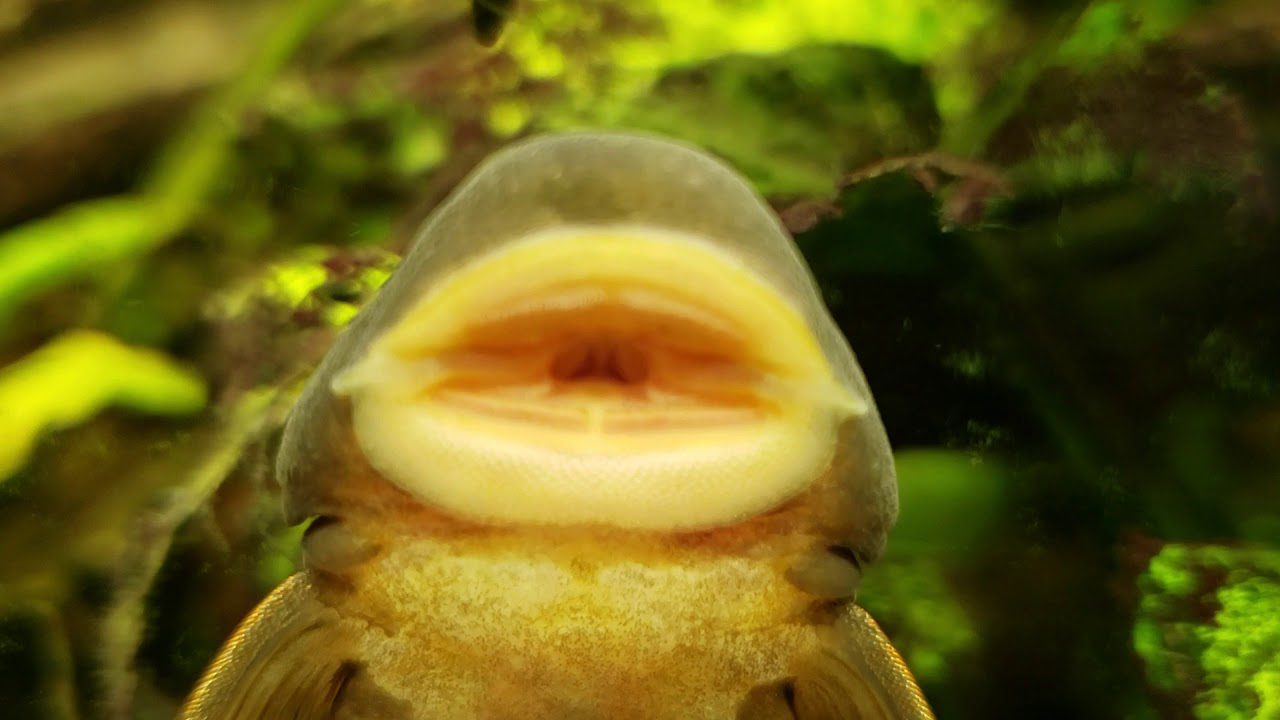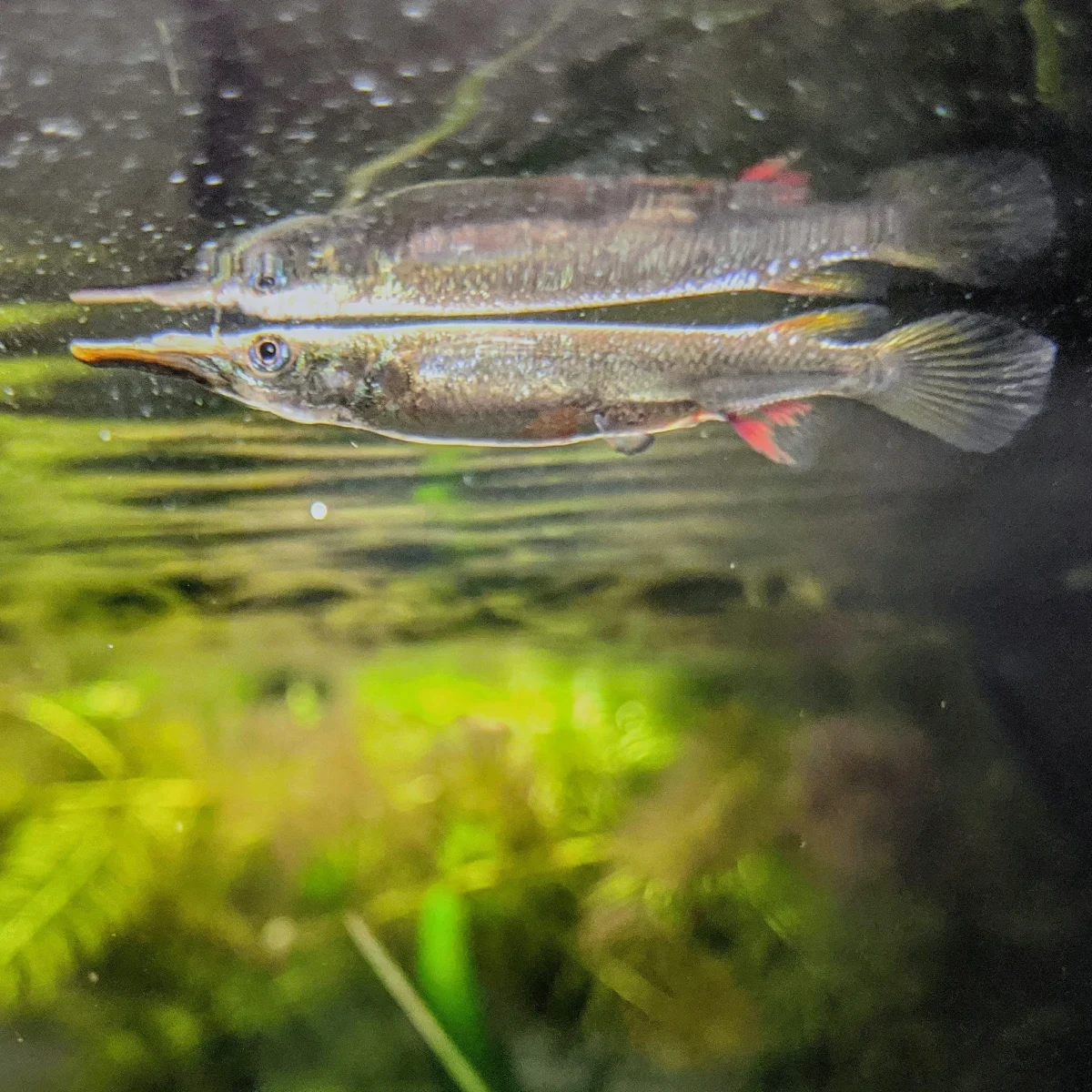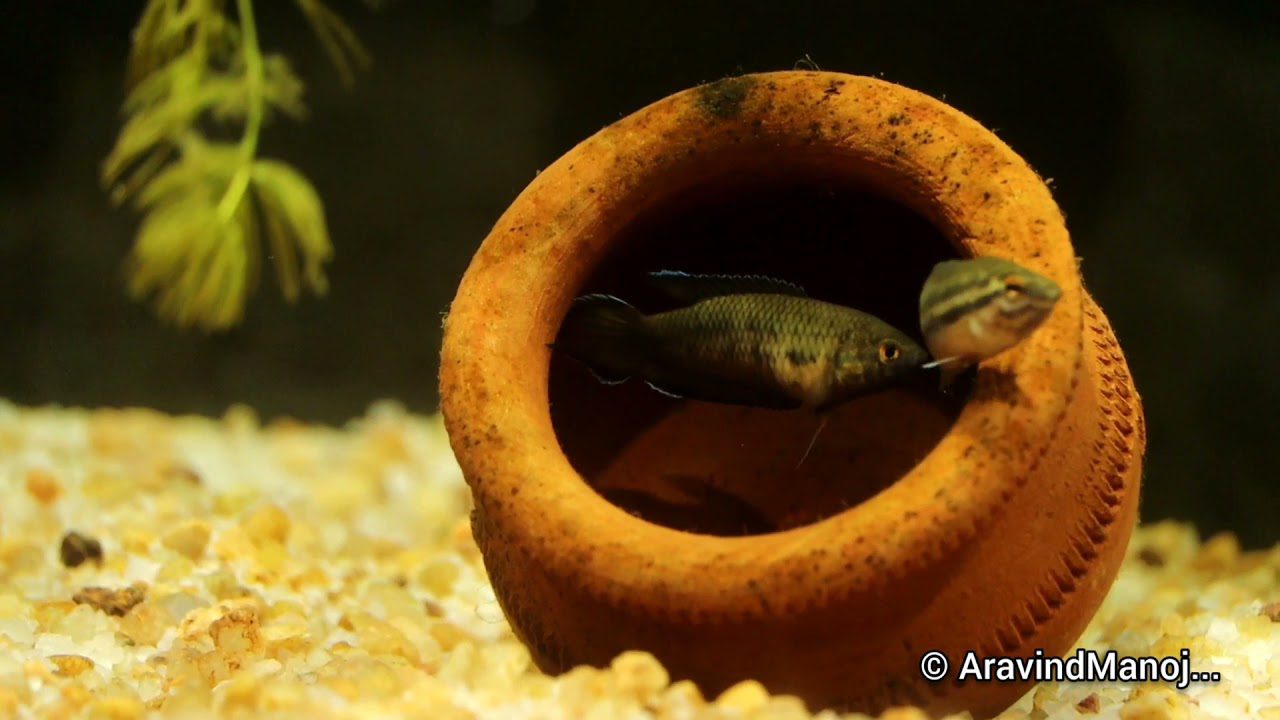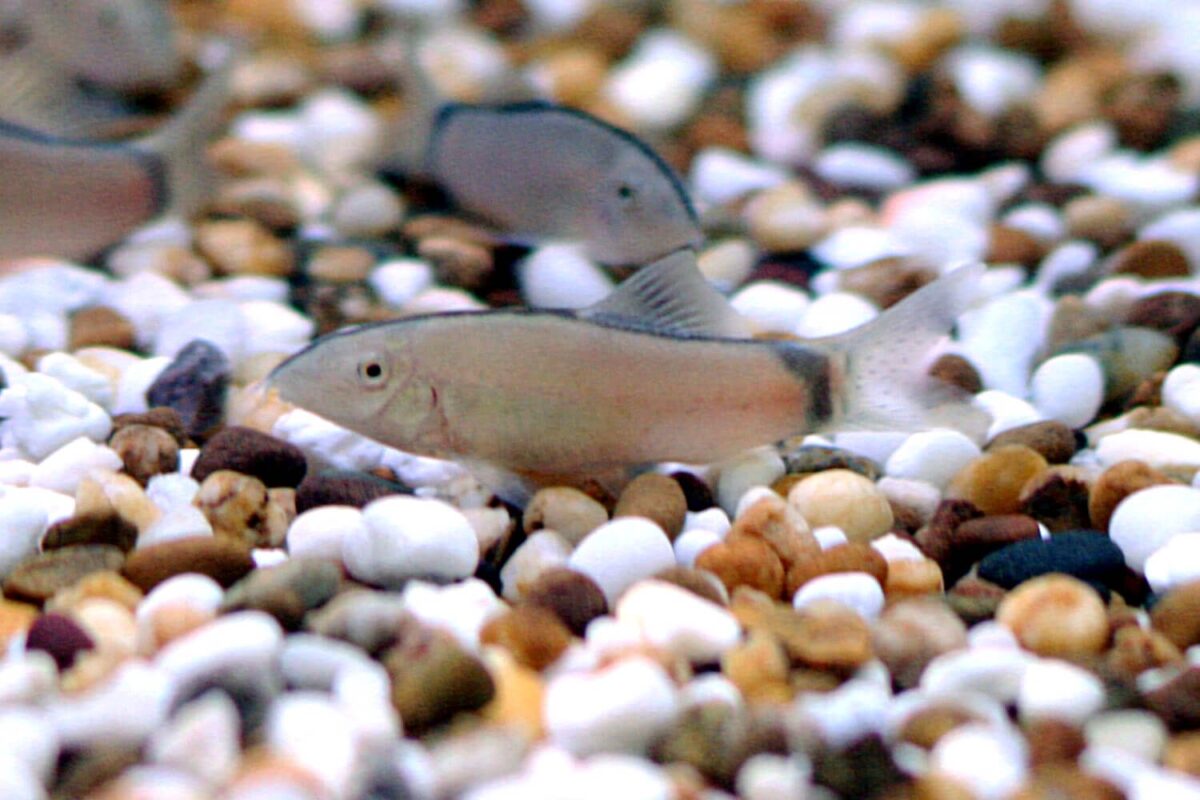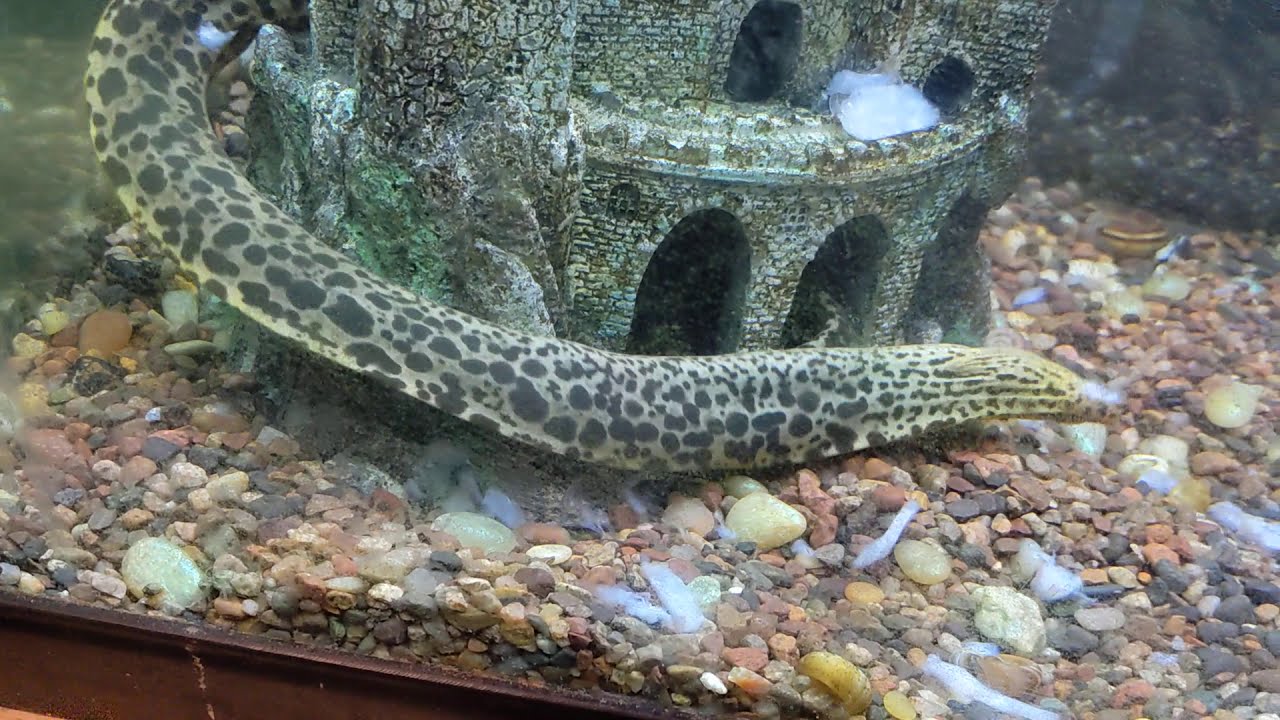Welcome to our comprehensive care guide on rubberlip plecos! In this article, we will explore everything you need to know about these fascinating freshwater fish, including their physical description, ideal tank conditions, diet, breeding, and more. Whether you’re a beginner or an experienced fishkeeper, this guide will provide you with valuable insights into the proper care and maintenance of rubberlip plecos.
Rubberlip plecos, scientifically known as Chaetostoma milesi, are peaceful fish native to South America. They belong to the suckermouth armoured catfish family and are widely popular in the aquarium trade due to their ability to eat algae and their peaceful nature. These fish have become a favourite choice among aquarists looking to keep a clean and harmonious tank.
Throughout this guide, we will cover various aspects of rubberlip pleco care, including their taxonomy and classification, natural habitat and distribution, physical description and characteristics, ideal tank conditions, diet and feeding requirements, breeding and reproduction, and more. By the end of this article, you’ll have all the information you need to provide the best care for your rubberlip plecos.
Key Takeaways:
- Rubberlip plecos, or rubber nose or rubber-lipped plecos, are peaceful freshwater fish native to South America.
- They belong to the Chaetostoma genus and are part of the suckermouth armoured catfish family.
- Rubberlip plecos are popular in the aquarium trade because they can eat algae and have a peaceful nature.
- This care guide covers their physical description, ideal tank conditions, diet, breeding, and more.
- By following this guide, you’ll be equipped with the knowledge to provide optimal care for your rubberlip plecos.
Introduction
In this section, we will explore the taxonomy and classification of rubberlip plecos and their natural habitat and distribution.
Taxonomy and Classification
The scientific name for rubberlip plecos is Chaetostoma milesi. They belong to the Chaetostoma genus, which is part of the family Loricariidae. These fish are commonly referred to as rubbernose plecos or rubber-lipped plecos.
Natural Habitat and Distribution
Rubberlip plecos are native to South America, specifically the Magdalena River in Columbia and the Apure River in Venezuela. They can also be found in smaller rivers and streams connected to these larger rivers. These fish are adaptable to a range of water conditions due to the changing environment of their natural habitat during the rainy season.
Physical Description and Characteristics
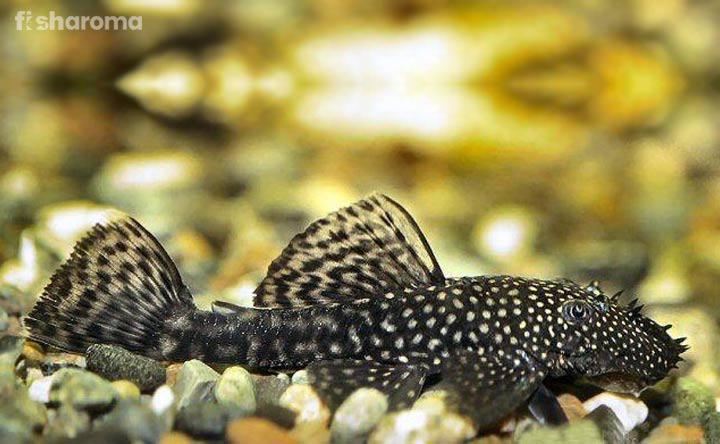
Rubberlip plecos have a classic pleco appearance, characterized by a large sucker mouth and a tapering body that extends to their caudal fin. They have elevated eyes positioned near the top of their head, which helps them keep a lookout for predators while scavenging near the bottom.
Colours and Markings
The colouration of rubberlip plecos can vary from grey to pale gold, with dark lines and dots covering their bodies. These markings provide camouflage in their natural habitat.
Gender Differences
Males tend to have more pronounced bristles on their heads than females. These bristles, known as odontodes, are used during courtship and territorial displays.
Varieties
There are different varieties of rubberlip plecos available in the aquarium trade. These variations may include various physical features or colour patterns, allowing enthusiasts to choose the one that appeals to them.
Grades
Rubberlip plecos may also be graded based on specific characteristics such as size, colour intensity, or fin set. Fish with desirable traits are often graded higher and may command a higher price in the market.
Behaviour and Temperament
Rubberlip plecos are generally peaceful and mellow, making them suitable for community tanks. They are known for their algae-eating abilities and spend most of their time scavenging for food near the aquarium substrate.
Aquarium Requirements
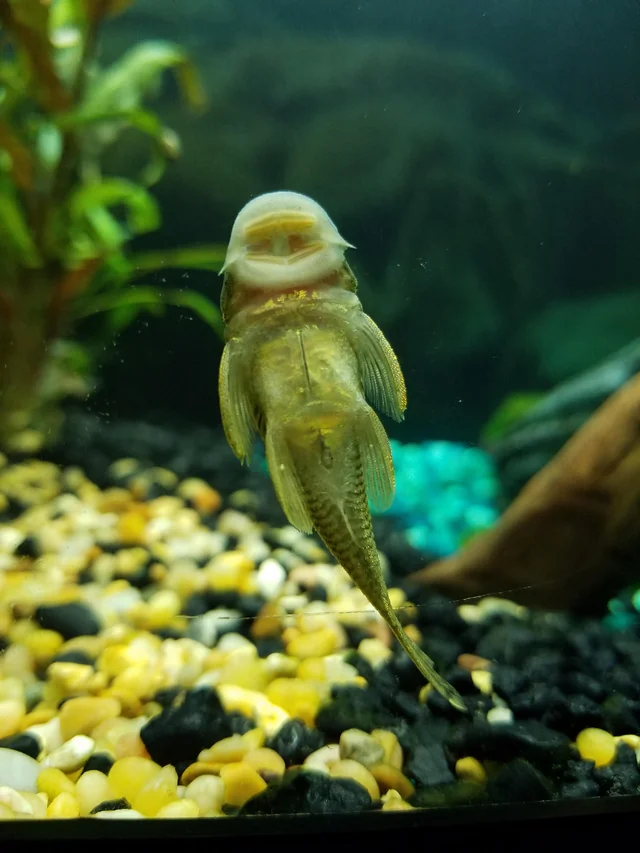
In this section, we will discuss the aquarium requirements for rubberlip plecos. Providing the right tank conditions is essential for the health and well-being of these fascinating fish.
Ideal Tank Size and Layout
The ideal tank size for a rubberlip pleco is at least 25-30 gallons. This will give the fish enough space to swim comfortably and explore their surroundings. It’s important to provide them with a tank that has ample hiding places, such as caves, driftwood, and rocks. Creating a natural-looking environment with plenty of hiding spots will help the rubberlip pleco feel secure.
Water Parameters
Maintaining the right water parameters is crucial for the well-being of rubberlip plecos. The recommended temperature range for their tank is between 72°F to 80°F. The pH level should be kept within the range of 6.5 to 8, and the water hardness should be between 8 to 12 KH. Ensure good water quality by regularly testing the parameters and performing necessary changes.
Suitable Tank Mates and Potential Conflicts
When selecting rubberlip plecos tank mates, choosing peaceful and non-aggressive species is important. Compatible tank mates include peaceful community fish like tetras, guppies, and dwarf cichlids. Avoid housing them with fin-nipping fish or aggressive species that may harm or stress the rubberlip plecos. Providing ample hiding places will also help mitigate potential conflicts.
Compatibility with Live Plants and Invertebrates
Rubberlip plecos are compatible with live plants in the aquarium. They primarily feed on algae but may also nibble on softer plant leaves. Choose hardy plants such as Java Fern, Anubias, and Java Moss, which can withstand their grazing behaviour. Regarding invertebrates, rubberlip plecos are generally peaceful and should not threaten shrimp or snails. However, it’s always a good idea to monitor their interactions closely.
Care
Proper care is essential for maintaining the health and well-being of rubberlip plecos. This section will provide comprehensive care tips, including information on tank maintenance, water quality, and feeding. We will also discuss common diseases that may affect rubberlip plecos and provide guidance on prevention and treatment options.
Diseases
Rubberlip plecos are generally hardy fish but can be susceptible to certain diseases. It’s important to monitor their health and take prompt action if any symptoms or abnormalities are observed. One common disease that rubberlip plecos may experience is ich, which presents as white spots on the body and fins. Another disease to be aware of is fin rot, which is characterized by the deterioration of the fins. Fungal infections and bacterial infections can also occur. Poor water conditions, stress, or inadequate nutrition can cause these diseases.
To prevent disease, it is crucial to maintain optimal water quality in the aquarium. This includes regular water changes, keeping the tank clean, and monitoring temperature and pH levels. A balanced and nutritious diet is also important for strengthening the fish’s immune system. Ensuring a stress-free environment with proper tank mates and suitable hiding places can help reduce the likelihood of disease.
If you notice any signs of illness in your rubberlip pleco, taking immediate action is essential. Quarantine the affected fish to prevent the spread of disease to other tank inhabitants. Consult a veterinarian or experienced fishkeeper for guidance on appropriate treatment options, which may include medications or adjustments to water parameters. Early detection and intervention are key to successfully treating and preventing diseases in rubberlip plecos.
Diet and Feeding
Feeding rubberlip plecos a nutritious diet is crucial for their health and well-being. Although they are primarily herbivorous and feed on algae in their natural habitat, providing enough algae in captivity can be challenging. In this section, we will discuss the dietary preferences of rubberlip plecos and provide recommendations for suitable foods to ensure they receive a balanced diet.
Dietary Preferences
Rubberlip plecos prefer plant-based foods, especially algae. In the absence of an ample supply of algae in the aquarium, it is important to offer them alternative sources of nutrition. Algae-based foods, such as algae flakes or wafers, should be a staple in their diet. These can be supplemented with other plant matter to provide a varied and nutritious menu for your rubberlip plecos.
Recommended Foods and Feeding Schedule
We recommend offering a variety of foods to ensure your rubberlip plecos receive a balanced diet. Here are some suitable foods:
- Algae flakes or wafers
- Leafy greens, such as spinach or kale
- Cucumbers
- Peas (cooked and peeled)
Feeding small amounts multiple times a day rather than a large quantity at once is essential. This mimics their natural feeding behaviour and helps prevent overeating or food wastage. A feeding schedule of 2-3 times a day is ideal for rubberlip plecos.
Tips on Ensuring a Balanced and Nutritious Diet
Here are some additional tips to ensure your rubberlip plecos receive a balanced and nutritious diet:
- Monitor their feeding behaviour to assess if they are consuming enough food.
- Avoid overfeeding, which can lead to health issues and poor water quality.
- Remove any uneaten food within a few hours to maintain water quality.
- Add occasional live or frozen foods, such as brine shrimp or bloodworms, to provide additional protein.
- Supplement their diet with high-quality commercial pleco pellets or tablets to ensure they receive essential nutrients.
By following these tips and providing a varied diet, you can help maintain the health and vitality of your rubberlip plecos.
Breeding and Reproduction
Breeding rubber lip plecos can be a rewarding experience for experienced fish keepers. This section will explore the breeding and reproduction process, including information on sexing rubberlip plecos, breeding behaviour, and optimal conditions for successful breeding. We will also guide the care of eggs and fry and discuss potential challenges in breeding rubberlip plecos in captivity.
Sexing
Sexing rubberlip plecos can be challenging as there are minimal external differences between males and females. However, there are a few indicators that can help determine the sex of these fish. Males typically have more pronounced bristles or odontodes on their snouts and pectoral fins than females. These bristles are used for territorial display and courtship during the breeding season. Additionally, males tend to have a slightly broader and more muscular body shape than females.
Breeding Behavior and Conditions
Rubberlip plecos exhibit interesting breeding behaviour. During the breeding season, males establish territories in the tank and defend them from other males. They conduct courtship displays to entice females into their territory for spawning. Once the female enters the male’s territory, they engage in a spiralling dance, after which the female selects a suitable spawning site on a flat surface or a piece of driftwood.
Creating the right breeding conditions is crucial for successful rubberlip pleco breeding. Maintaining clean water with optimal parameters is essential. The water temperature should be around 75°F to 80°F (24°C to 27°C), and a pH level between 6.5 and 7.5 is recommended. It is important to provide suitable hiding spots and flat surfaces, such as PVC pipes or slate tiles, for the females to lay their eggs. Additionally, introducing caves or other structures can mimic the natural spawning habitats of rubberlip plecos and encourage breeding behaviour.
Care of Eggs and Fry
Once the female lays eggs, the male fertilises them and guards the clutch until they hatch. It is essential to ensure that the eggs remain undisturbed and are kept in a separate tank with similar water conditions. The eggs typically hatch within 5 to 7 days, and the fry will attach to the male’s body for protection. The male pleco will continue caring for the fry for several weeks, ensuring their safety and providing enough food to grow.
Challenges in Breeding in Captivity
Breeding rubberlip plecos in captivity can present some challenges. Environmental factors like water quality and tank setup must be closely monitored. A lack of suitable breeding sites or hiding spots may discourage spawning behaviour. Additionally, the compatibility of potential breeding pairs can impact successful reproduction. It is also essential to provide a varied and nutritious diet for both the adults and the fry to ensure their health and growth.
Summary
In conclusion, keeping rubberlip plecos requires attention to their needs to ensure their health and well-being. Regarding tank requirements, a minimum tank size of 25-30 gallons is recommended to provide ample swimming space. Maintaining suitable water parameters, such as a temperature range of 72°F to 80°F, a pH level between 6.5 and 8, and a water hardness of 8 to 12 KH, is essential. Additionally, choose compatible tank mates carefully to prevent potential conflicts, and consider the compatibility of live plants and invertebrates with the rubberlip plecos.
Care for rubberlip plecos includes maintaining their diet and feeding habits. Although they are primarily herbivorous, it may be necessary to supplement their diet with algae flakes or wafers, along with leafy greens, cucumbers, and peas. Establishing a feeding schedule and ensuring a balanced and nutritious diet is crucial for their health.
If you are interested in breeding rubberlip plecos, understanding their behaviour and providing suitable conditions are essential. Sexing the fish and creating an environment miming their natural habitat will encourage breeding. However, breeding rubberlip plecos in captivity can present challenges, and preparing for these difficulties is important.
Rubberlip plecos are peaceful fish that can be a valuable addition to a freshwater aquarium. By providing the right tank conditions, offering a varied diet, and understanding their breeding behaviour, you can create a thriving environment for these fascinating creatures.

